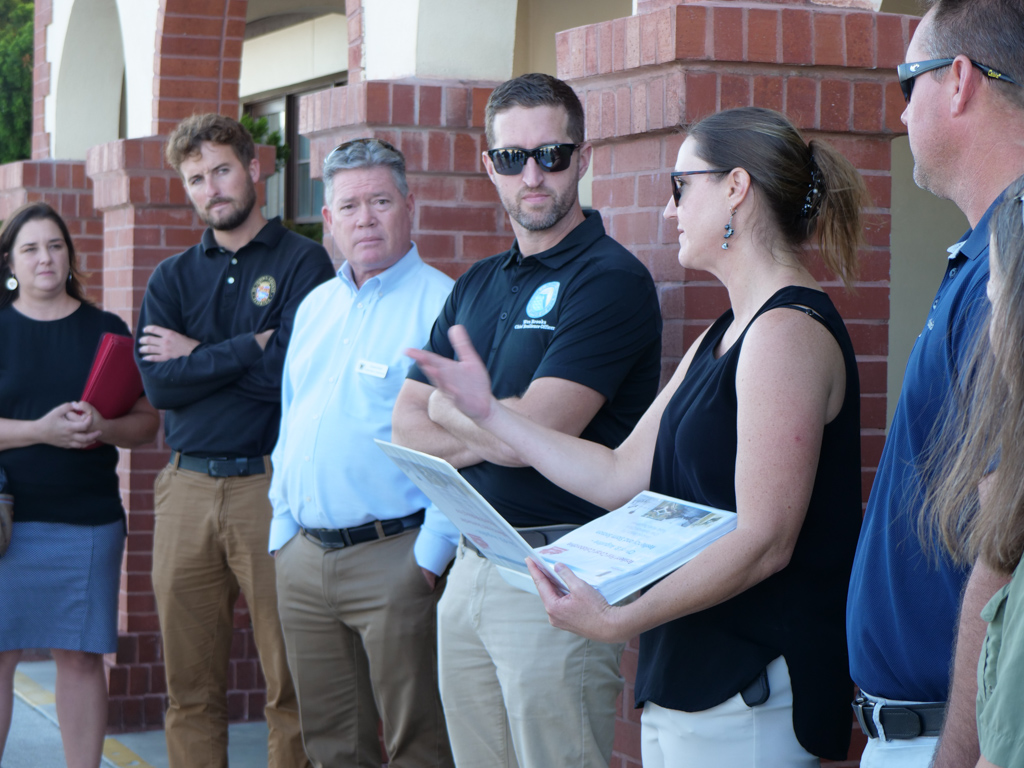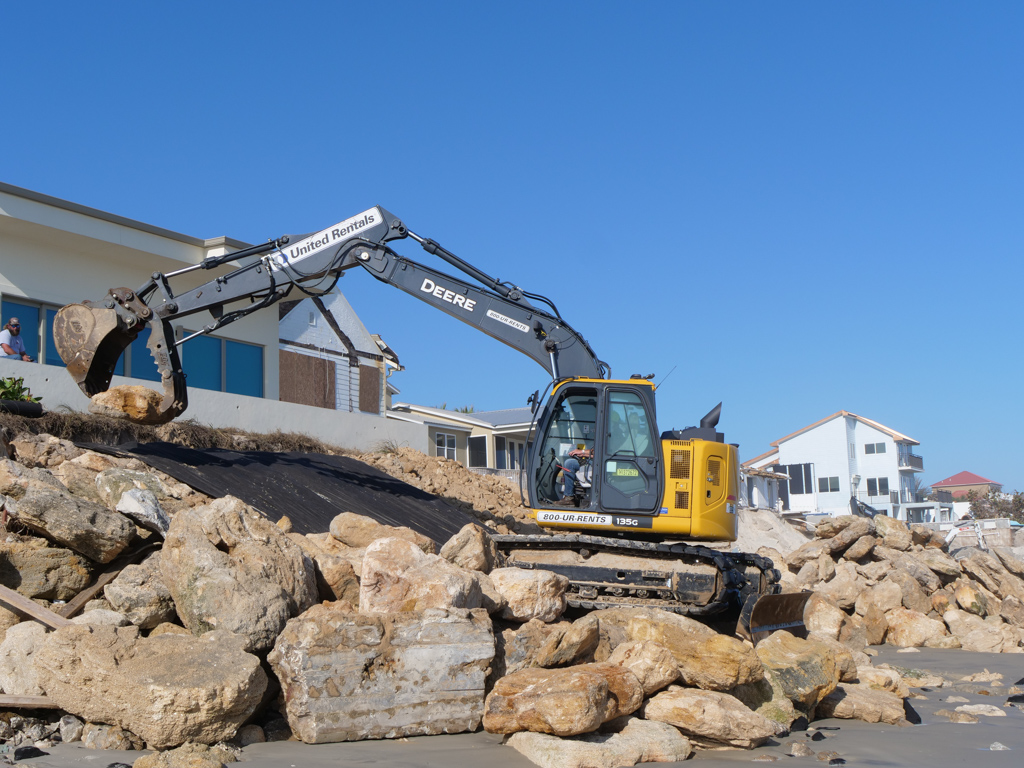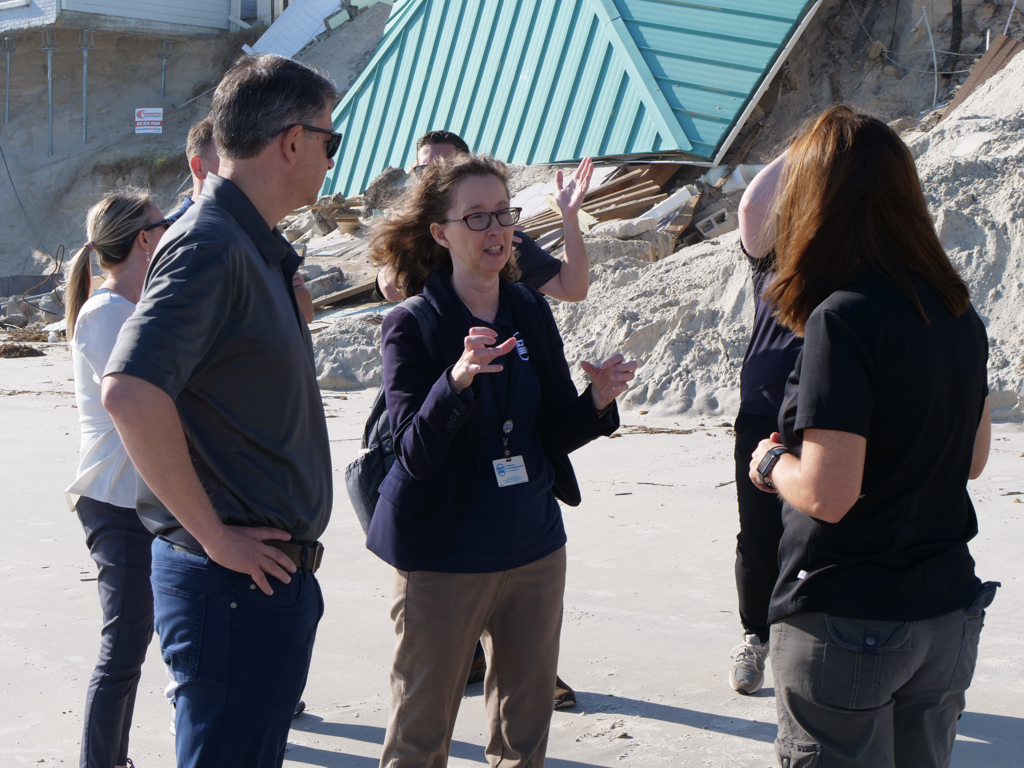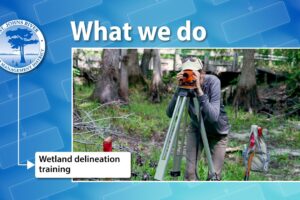Hurricane Ian made landfall on Sept. 28, closely followed by Hurricane Nicole on Nov. 10. Ian brought extreme rainfall over portions of inland Florida, resulting in flooding that took more than a month to recede in some communities. In coastal regions, storms thrashed shorelines.
Months later, the evidence of destruction remains. Soggy drywall is piled up outside the homes on a low-lying street, and a brown line four feet up the side of a wall marks the depth of flood waters that once inundated the homes. Blue tarps still cover roofs. Beach parks are filled with piles of sand to replenish the shoreline, and, where the storm took too a big bite of the coast, houses collapsed onto the sliver of beach remaining.
Now that floodwaters are receding, communities across Florida are cleaning up and rebuilding.
The devastation caused by Hurricanes Ian and Nicole has prompted a renewed examination of how best to rebuild. Communities are examining how they can become more resilient to future storms and even what land use should look like in the future.
Recently, Dr. Wes Brooks, Chief Resilience Officer with the state of Florida, visited eight counties throughout the St. Johns River Water Management District, meeting with mayors and city managers from communities impacted by the storms. Representatives from the Florida Departments of Economic Opportunity, Environmental Protection, Transportation, the Division of Emergency Management, the Florida Fish and Wildlife Conservation Commission, and the St. Johns River Water Management District participated — listening and offering ideas for funding for recovery efforts.
“The strength and character of these communities and their ability to persevere is remarkable,” said Brooks. “Each community is unique. We’re here to support their efforts to recover and become even more resilient.”
These efforts are not necessarily new, local municipalities have been concentrating on resiliency strategies for years. For example, in St. Augustine, the city encased the electrical system that powers stormwater pumps in marine-grade sealed boxes that can withstand seawater. This keeps the pumps running when they are needed most. In Brevard County, a living shoreline of oysters and mangroves helps prevent erosion and improves water quality.
Non-coastal communities are tackling how to alleviate flooding in more developed areas. With fewer natural habitats like wetlands, and limited capability to store floodwaters, areas like Orange County are exploring ways to further utilize their stormwater ponds and how to redirect floodwaters away from homes.
“The District works closely with communities across our 18-county region to implement a variety of resiliency projects, whether it is through our cost-share program, providing valuable data or guidance, or through our permitting process,” explains District Assistant Executive Director Mary Ellen Winkler. “Resiliency is built into all of the District’s core missions and we look forward to continuing to work with our partners to identify, fund and execute vital projects to protect our local communities and coastline.”
These projects can come in all shapes and sizes. It is not a one-size fits all approach. Sometimes resiliency projects require utilizing new technologies, but many times these projects are restoring Florida’s natural ecosystems, like wetlands. A great example of this can be found with the Flagler County Wetland Restoration Project where over 100 acres of coastal wetlands were returned to their natural state after being excavated for mosquito control ditches in the 1960s. Coastal wetlands provide many benefits, including protection from storms by dampening the energy of waves and storm surge.
“For the District, resilience is integrated into our daily work,” says Tom Frick, the District’s Chief Resiliency Officer. “Our flood control projects and structures mitigate flooding risk; our groundwater modeling and permitting ensures adequate supplies for people and the environment,” he explains. “Even land management supports resilience. Seventy-three percent of the over 780,000 acres the District owns or manages are in floodplains. We’ve been doing a lot, but there’s more that we can do.”
That was echoed during the recent resiliency tour with Dr. Brooks, with one county official pointing out that building resilience is providing insurance for future events. It is the work being done now that will help us the most in the future.
To learn more about District efforts, visit www.sjrwmd.com/localgovernments/sea-level-rise. Additional information about the statewide resilience efforts can be found at the Florida DEP website and Florida Statewide Office of Resilience’s Twitter page.








